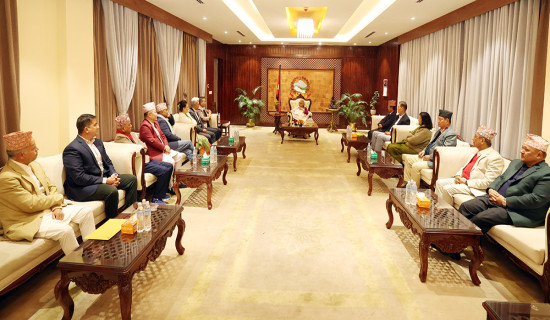- Sunday, 30 November 2025
Dashain: Time For Delight
Pallav Bhusal
As the days grow shorter and the cool autumn breeze begins to sweep through the valleys of Nepal, the unmistakable signs of Dashain are all around us. For us Nepali, Dashain is not merely a festival, but a period of rejuvenation, family bonding, and deep cultural significance. The vibrant kites soaring in the sky, the smell of fresh marigolds, and the rhythmic beat of traditional music serve as reminders that the biggest festival of the year is upon us.
Growing up in a traditional Nepali household, Dashain always carried an air of anticipation and excitement. As a child, it was the time of year when school holidays felt longer, new clothes were a given, and the promise of tika from elders meant receiving blessings and, more importantly, money. However, as I’ve grown older, I’ve come to appreciate Dashain for its deeper, more profound meanings. Beyond the material celebrations, Dashain is a time for reflection, reverence, and reuniting with our roots.
This festival, celebrated over 15 days, commemorates the victory of good over evil, symbolised by Goddess Durga's triumph over the demon Mahishasura. The rituals, from ghatasthapana to tika, all have their unique significance, tying us back to centuries of tradition. Every family, every community has its own way of celebrating, but at the heart of it lies one common theme: unity.
I recall vividly how Dashain was always the time when the entire extended family, scattered across various parts of Nepal or abroad, would return to our ancestral home. It was a time when differences were set aside, where arguments of the past year would dissolve in the shared laughter over large family feasts. The sight of elders preparing jamara (the sacred barley shoots), the younger members playing cards late into the night, and the smell of home-cooked food bubbling away in large pots are all memories that encapsulate the spirit of Dashain for me.
Yet, as I look around today, it is impossible not to notice the subtle changes in the way we celebrate. Urbanisation has altered some of our traditional practices. The rush of modern life, especially in the bustling cities like Kathmandu, often means that families no longer have the luxury of spending all fifteen days together. Some people choose to travel abroad during the holidays, and the ritualistic aspect of Dashain can sometimes feel diluted.
However, despite these changes, Dashain remains a powerful anchor. It provides us with the rare opportunity to pause in our busy lives and reconnect with our families, friends, and most importantly, our culture. The journey back to one’s ancestral home during this time is symbolic of the journey inward, a chance to introspect, to find peace amidst the chaos, and to remember what truly matters.
There is also a spiritual element to Dashain that is often overlooked in our more commercialised celebrations. The Goddess Durga’s victory reminds us of the eternal struggle between right and wrong, good and evil. Dashain encourages us to be better versions of ourselves and to seek the blessings of our elders to guide us on the right path.
This year, as we adorn our foreheads with the tika and wear our jamara, let us remember that Dashain is not just about rituals or a break from work. It is about honouring our heritage, fostering unity, and nurturing our relationships. As the kites fly high, and the city hums with festive cheer, one thing is clear, Dashain is not just here in the physical sense. It is here, in our hearts.

















